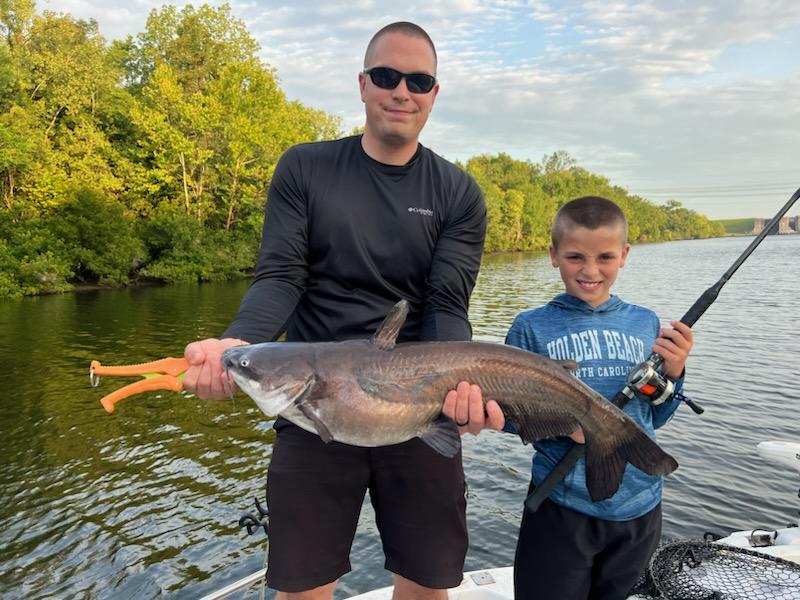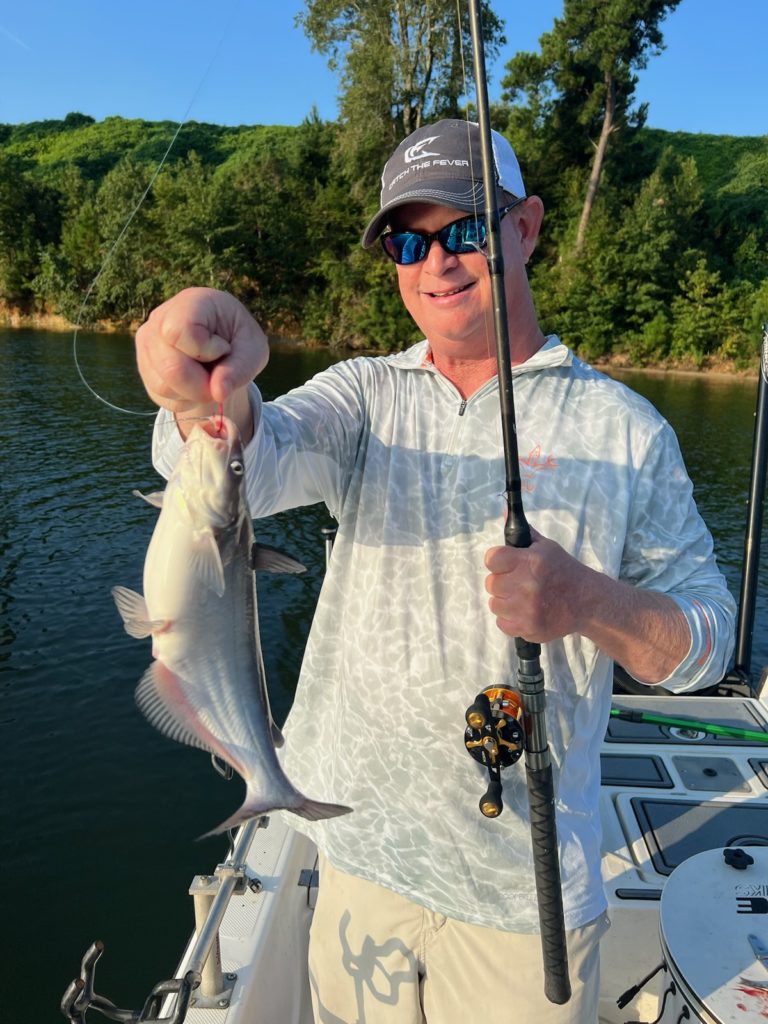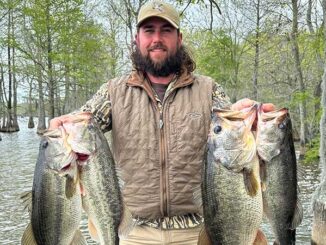Fast action on frying-sized fish in the Diversion Canal
Catching big catfish is fun, and Capt. Joe Dennis of Captain J Hook Charters and Father and Son TV is known for catching trophy-sized cats, but some of his clients are just looking for a mess of frying-sized eaters. That’s when he suggests a September drifting trip through the Diversion Canal.
“This is a good way to catch a mess of eaters quickly. We usually start at first light and are back at the dock before the heat of the day kicks in,” said Dennis.
Dennis uses a basic Carolina rig, using Slime Line monofilament for his main line, which runs through an egg sinker, and is then tied onto a barrel swivel. A leader is tied to the other end of the barrel swivel and finished off with a small hook.
When targeting these small catfish, Dennis uses pieces of fresh shrimp for bait. He’ll also use small pieces of baitfish.
Always a chance for a big fish
“On some days, they bite the shrimp better. On other days, the cut baitfish is the star. Having both allows me to see which one they’re biting best. And then I’ll use just that one as long as the fish keep biting,” he said.
Dennis (843-245-3762) uses a baitcast reel mounted on a Catch The Fever Striper Stealth rod.

“These rods are very strong, but they’re also very sensitive. That helps you detect even the lightest of bites. It also makes the fight more fun, because you can really feel the fish,” he said. “And when fishing this way, even with small pieces of bait, we’ll catch some bigger fish, anywhere from 15 pounds on up. And these rods can handle that with ease, and if you slip into catching something even bigger, it’s not a problem for these rods.”
Using his trolling motor to keep his boat drifting sideways down the canal, Dennis drops his bait down with four to eight rods, which he puts in rod holders. Then he drifts with the current.
Find the Diversion Canal’s hotspot
“And you just keep your eyes on the rods. When you get a bite, it’s best to wait for the rod to load up. So you usually don’t really have to set the hook. You just lift the rod and start reeling,” he said.
Dennis said the hottest part of the canal changes from one day to the next. He pays close attention to landmarks on the banks and keeps track of where the hottest bite occurs. And once the bite slows down, he cranks the outboard and drives just above the hotspot, then drifts again.
For anglers looking for big fish action, Dennis has a different plan of action to make that happen.
“But if you’re looking for fast action on a lot of fish that are eating sized, this is the technique that’s working right now,” he said.






Be the first to comment